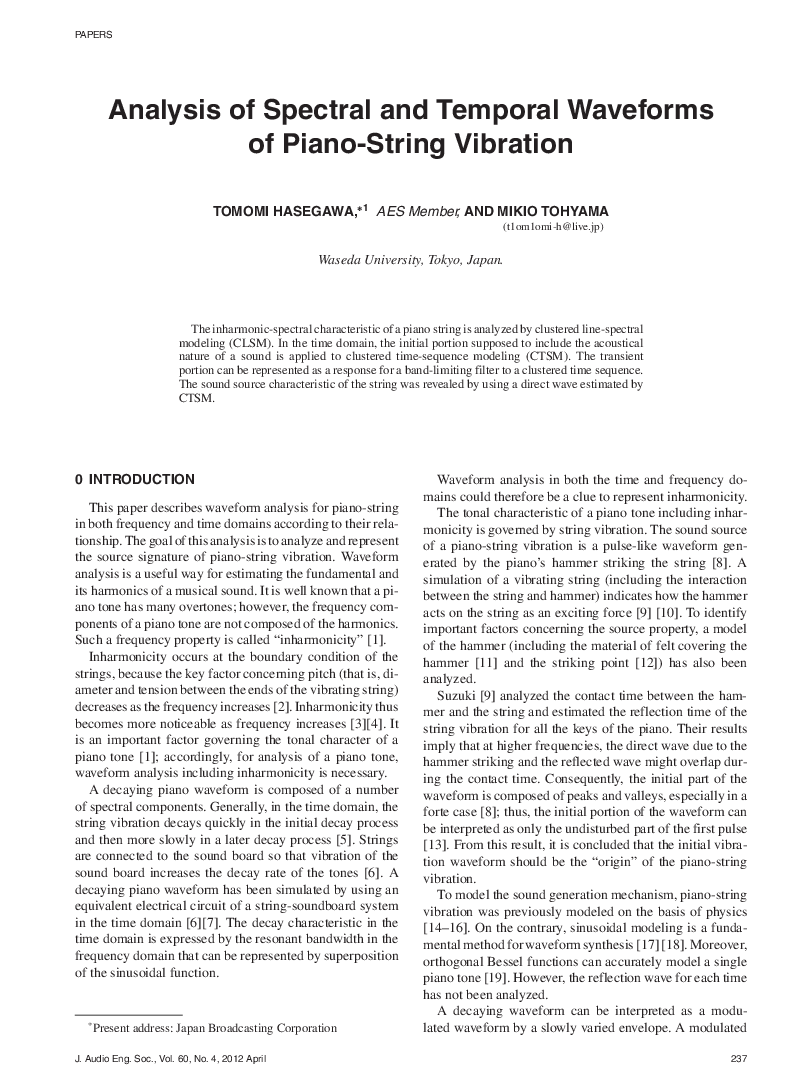Home / Publications / E-library page
You are currently logged in as an
Institutional Subscriber.
If you would like to logout,
please click on the button below.
Home / Publications / E-library page
Only AES members and Institutional Journal Subscribers can download
It is difficult to analyze the sound from vibrating piano strings because the harmonics are not pure harmonics of the fundamental. Both time and frequency perspectives are required, especially since the initial transient produced by the hammer is a critically important part of the sound. A cluster line spectrum model (CLSM) appears to adequately capture the decay but a cluster time-sequence model (CTSM) is required to analyze the initial transient. The sound source characteristic of the piano string was revealed by using a direct estimate by CTSM.
Author (s): Hasegawa, Tomomi; Tohyama, Mikio
Affiliation:
Waseda University, Tokyo, Japan
(See document for exact affiliation information.)
Publication Date:
2012-04-06
Import into BibTeX
Permalink: https://aes2.org/publications/elibrary-page/?id=16217
(1419KB)
Click to purchase paper as a non-member or login as an AES member. If your company or school subscribes to the E-Library then switch to the institutional version. If you are not an AES member Join the AES. If you need to check your member status, login to the Member Portal.

Hasegawa, Tomomi; Tohyama, Mikio; 2012; Analysis of Spectral and Temporal Waveforms of Piano-String Vibration [PDF]; Waseda University, Tokyo, Japan; Paper ; Available from: https://aes2.org/publications/elibrary-page/?id=16217
Hasegawa, Tomomi; Tohyama, Mikio; Analysis of Spectral and Temporal Waveforms of Piano-String Vibration [PDF]; Waseda University, Tokyo, Japan; Paper ; 2012 Available: https://aes2.org/publications/elibrary-page/?id=16217